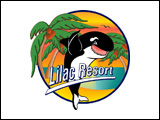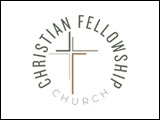A few years ago, my wife Ruth and I had the amazing opportunity to make some Anabaptist connections in Europe. We were on our way back from Egypt where we had visited our son, Nelson, where he was teaching English two hours south of Cairo at a city called Beni Suef. After arriving in Frankfurt, Germany, we rented a car, and with the help of a GPS (Global Positioning System) we found our way to historic sites in the Alsace region of France as well as Northern Switzerland and Southern Germany.
While castles, mountains and alpine meadows had their allure, our most momentous days were those in which we made connections with the Anabaptist story of the early 16th century. After teaching Anabaptist history and theology for most of my adult life, it was very meaningful to be physically present where my mind and heart had often gone before. This happened on three separate occasions.
The first took place in Strasbourg, France. Our first stop on our first day of touring was at the Mennonite World Conference office, just a few blocks from Old Strasbourg – that section of the modern city dating back at least two millennia and surrounded by a river and canal that once served as a defense against invaders. Since we had a few hours to kill before the offices closed and we would accompany Eleanor Miller to her home for the night, we did our own walking tour of Old Strasbourg. Upon crossing the bridge, we were confronted with a collage of very old, historic buildings. Immediately to the right we came upon St. Peter’s Church. It was quite impressive and it was open. We soon discovered upon entering that this was the church where Capito had become the first Reformed preacher when he led the congregation out of the embrace of Catholicism in 1523.
I knew from earlier studies that Strasbourg had offered a haven of sorts to early Anabaptists who were being persecuted. Being at the crossroads of Europe, Strasbourg had been more open to new ideas than other European centers. It was in this church that Capito had formal debates with Anabaptist leaders and provided safe haven for many of them. I don’t know if it was allowed, but I climbed into the pulpit about twelve feet above the pews and Ruth took a picture of me standing where Capito had stood preaching reformation faith many times nearly 500 years ago. I suspect he was a better preacher than I am.
Our second encounter with the Anabaptist story took place in Zurich on our fourth day on the road. HansPeter Jecker, teacher at the Bienenberg Theological Seminary near Basel, had provided us with detailed maps highlighting points of interest related to Anabaptist beginnings in that city. We found the Grossmuenster Church where the famous reformer, Zwingli, had initiated reforms as early as 1519. It was in this church where a young group of Zwingli’s followers, including Conrad Grebel, Felix Manz and George Blaurock had become impatient with the pace of Zwingli’s reforms. Eventually they had baptized each other with what they considered to be the true Christian baptism in the home of Felix Manz’s mother, a stone’s throw east of the church – and so “formally” launched the Anabaptist movement.
We found at least ten points of interest related to the Anabaptist story in and around the Grossmuenster. They included the Rathaus where debates between Anabaptists and the city council took place, the home of Conrad Grebel’s parents, and of course the plaque across the Limmat River commemorating the drowning of Felix Manz because of his faith in the middle of the river at that spot. We climbed one of the towers of the Grossmuenster Church and got a bird’s eye view of the territory where the Anabaptist movement was launched in January, 1525. I imagined bringing all my students of Anabaptist history of the past to this place to connect with the history of the early story as I was now able to do. In a strange sort of way I felt at home. I left a note in the guest book at the Grossmuenster identifying myself as an Anabaptist who had survived all attempts to stamp out this new teaching – together with my email address. Who knows what connections that might provide in the future.
The third encounter with the Anabaptist story happened late in the afternoon of the same day at the Taeufer Hoehle, or Anabaptist Caves. HansPeter Jecker had also provided us with information on how to find them about an hour southeast of Zurich. Without these directions we would never have found them. They are not clearly marked. Even our GPS system could not find us in the alpine meadows we crossed to get to this early Anabaptist hideaway! I guess the persecuted early Anabaptists had chosen their hiding place quite well – even beyond the reach of modern satellite tracking systems! Eventually, by means of frequent enquiry, we found the end of the road. I guess a hideaway you could drive right up to would not have been that appropriate.
After a twenty-minute walk up a mountain trail, across a rickety bridge over a small stream, there they were – right in front of us. A large opening in the side of the mountain sporting a small waterfall right in front of it cascading down into a deep ravine. We made our way gingerly on a slippery boardwalk right into the caves. As I progressed deeper into one of the caves I could see numerous shadowy hiding places. I wish I would have had a flashlight to explore them all. In any case, here I was squatting in the shallow hideouts that early Anabaptists used to avoid capture and certain death half a century ago. I am not sure that I felt at home here. But it was an awesome experience to crouch down in the same places where my Anabaptist forbears had huddled in the cold and dark, seeking comfort in the presence of each other and the God who had promised not to forsake them.
Finding these Anabaptist connections made our time in Europe “worth the trip”. It was a dream come true – a dream that I had gradually allowed to die. When dead dreams come back to life one knows what it means to be truly alive!



